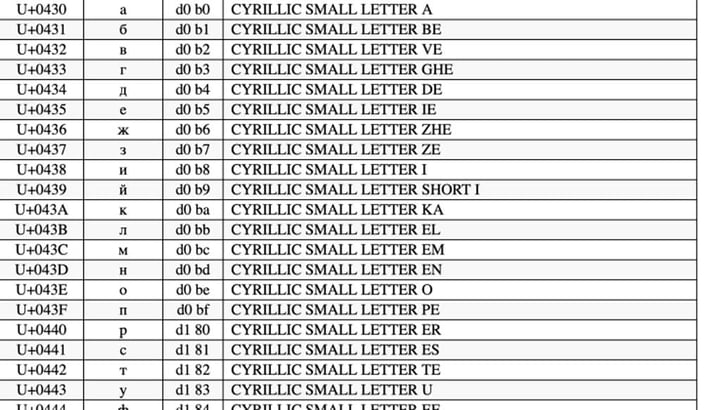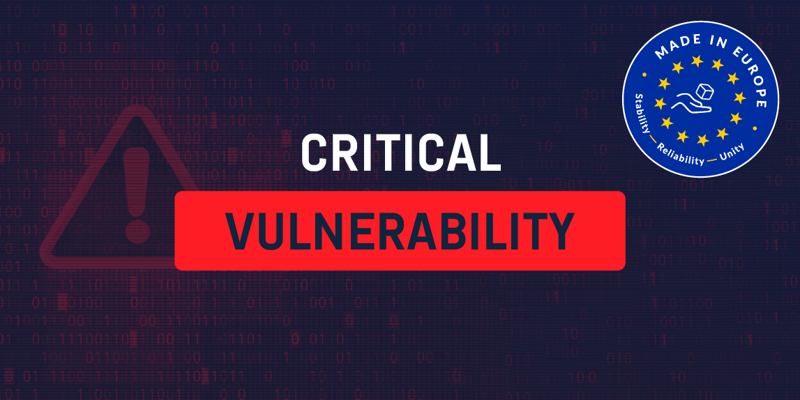
UTF-8 characters
The image above is a screenshot from the website https://www.utf8-chartable.de/unicode-utf8-table.pl (external link) where you can find more UTF-8 characters. Due to UTF-8 encoding, you are able to display non-latin alphabet characters – for example „Ø”, or „©”. Try to identify which letters look similar to the ones from a Latin alphabet? Now, just imagine that somebody registered a copy of your banks domain by using, for example, a Cyrillic letter „а” instead of a regular „a”. And then hosted a clone of this banks’ website, set up as https, to make it seem legit.
From a visual perspective, you won’t be able to identify if this link is malicious or not, since it doesn’t cоntain mіѕѕреllіngѕ оr оthеr trісkѕ that yоu might lооk for – if you don’t believe me, try to identify which of the letters used in the bold text above are Cyrillic.
Can’t do it? Keep reading to learn more about how you can protect yourself against these frauds.
Have you ever seen emoji URLs?
Domains, that are using graphical characters are nothing new – first of them were registered in April, 2001 and since then we’ve can easily use emojis in domain names, if we wish to.
- ♨️ .com (xn--j6h.com)
- ♨️ .net (xn--j6h.net)
- ☮️ .com (xn--v4h.com)
The idea of such URLs is very interesting – since there is a limit to how many languages a person is able to understand the word “Apple”? If you’ll have a domain including a symbol of an apple (🍎), anybody will understand it.
Ability to use regular .com & .net extensions
At the very beginning, it was possible to register emoji domains with extensions like .com or .net. Even today, it’s quite easy to find a website that is being hosted on a domain such as this ⛄️.com. However, a limitation has been introduced since that time. These days, you can only register domains with the following extensions:
- .cf
- .ga
- .gq
- .ml
- .tk
- .st
- .fm
- .to
- .je
- .gg
- .kz
- .com.kz
- .org.kz
- .ws.
Why can I no longer register such a domain with the .com extension?
Emojis are not the only possible characters that can be used in “special” domain names – You’ll find that some of the graphic characters from UTF-8 are extremely similar to our alphabet letters. Now, just imagine the possibilities of registering such a domain with .com or .pl. Somebody could easily then register a domain that looks exacly like your banks domain and host a cloned website there, for example. Also – there’s nothing keeping them from implementing a https connection to it and getting a trustworthy looking padlock icon.
Does the limitation solve the fraud risks?
Not really – it does however minimize the risk – your bank’s domain with a .ws extension will look suspicious (if you are verifying the URLs before you’ll click on them!). It’s important to remember that social engineering is based on natural human behavior, needs and emotions. In such cases the attacker can encourage you to click on unusual, interesting looking URL addresses – and in some cases, it’s totally enough to hack your device (for example if you are not a big fan of update installations).
5 steps to becoming more resilient against these tricks:
- First of all – do not click on links being sent from unknown people (in for example e-mails) – If you are dead set on opening it anyway, try to open the website (if it looks legitimate!) directly from your browser, or find it through the search engine.
- Always remember to verify the domain name (for example against misspelling – it’s quite easy to confuse rn with m) and hover over a link before you click.
- Remember to keep your software updated – it’s quite a universal recommendation, but it will protect you against most attackers.
- Share this article – you’ll increase your friends awareness too!
- Subscribe to our newsletter by clicking this link and get notifications of new security-related articles.







